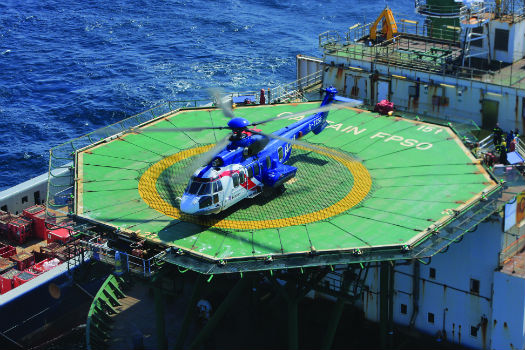
Bristow will be reducing the number of rotary-wing types in its fleet from 24 to six.
Heath Moffatt Photo
Bristow CEO Jonathan Baliff has called on original equipment manufacturers (OEMs) to take their share of the “availability risk” for operators following the purchase of an aircraft — and promised the operating giant would make no purchases from OEMs that failed to do so. Speaking at a business leader panel session at Helitech International 2014 in Amsterdam, Netherlands, this morning, Baliff also said Bristow was aiming to reduce the number of rotary-wing types in its fleet from 24 to six, with the result that any future orders would be for significant numbers of aircraft.
“We have become a very complicated company, our peers have become more complicated companies, yet we’re buying aircraft . . . in a very unsophisticated way,” he said. “Generally, the contract has been about the purchase and not about the life of the helicopter— so that it doesn’t really take into account what’s going to happen in year 20 when it comes to spares.”
He said future helicopter purchases would see the company taking a different approach.
“We’re not going to look at the initial purchase as being the [whole relationship with the OEM]; it’s just the beginning. And second: we’re not going to buy just six aircraft; we’re looking to buy a whole fleet of aircraft, and looking at the whole lifespan of the helicopter. What does this mean? It means that we . . . need to share our availability risk with our OEMs — that we’ll achieve a certain level of availability, [because] the OEMs will provide an aircraft for us, more spare parts, whatever. Right now it’s a negotiation — it needs to be contractually obligated like it is in fixed-wing.”
Baliff said that while the next OEM that does a big purchase with Bristow is going to have to share the responsibility for availability, the rewards for the OEMs in profitability could potentially be in the hundreds of millions of dollars. “We think our clients are suffering right now because of this availability strain — due to crews having to stay overnight,” he said. “And so I have been assured by many clients that they would happily pay up for availability guarantees. That would be very high, but they’d share it with the OEMs.”
Reflecting on the overall state of the offshore industry, Baliff said it was like a maturing infrastructure sector, because of the development of operator relationships with the OEMs and the increased equity capital underneath it. He said the key industry themes for the next five years would be the transport of passengers further offshore, more government outsourcing of services such as search-and-rescue, an increase in operations in harsh/cold environments (such as the Arctic), and a shifting focus to maturing basins (such as those off Brazil).









